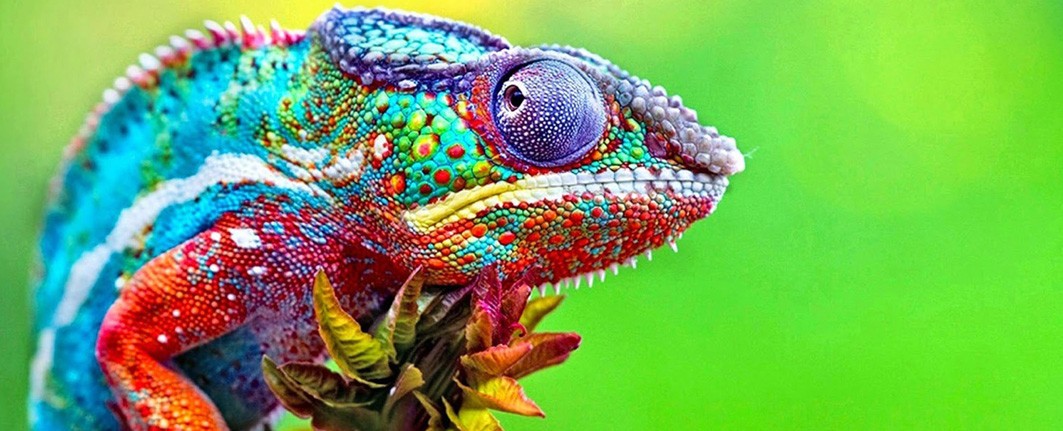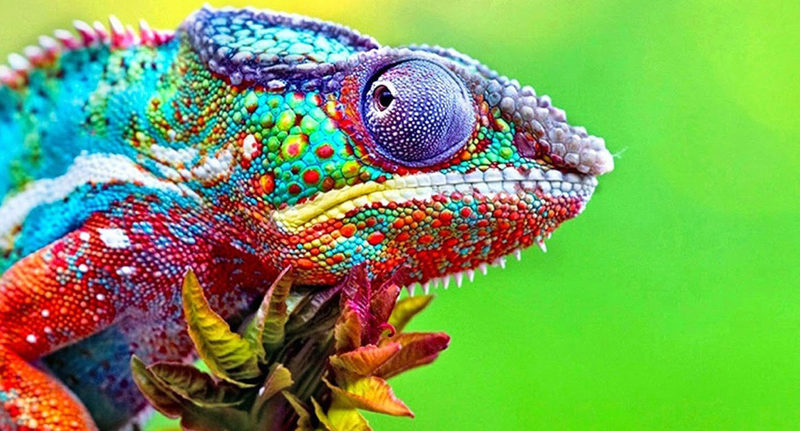
Almost 400 species of reptile have been described from Madagascar, of which more than 90% are endemic. There are four orders of reptiles in the world: crocodiles, tuatara, lizards and snakes, and turtles. All of these except New Zealand’s tuatara are found in Madagascar. Thirteen families are represented. The majority of Malagasy reptiles are diurnal, but about 85 species are nocturnal, including most geckos and many snakes. Some reptiles can be active both night and day, and even some strongly nocturnal species can occasionally be active by day.
Nocturnal reptiles of Madagascar
They generally have vertical ‘slit’ pupils while diurnal ones have round pupils, although there are exceptions. Reptiles are remarkably common and conspicuous in Madagascar, one of the easiest places on Earth for a visiting naturalist to amass an impressive reptile list. Many species can be seen on exposed rocks or tree trunks. Chameleons can be hard to spot during the day, but sleep on low-hanging branches, making them easier to find at night. Plated lizards and skinks often reveal themselves by the noise of their movement through the leaf-litter. Poking around dead wood and taking night walks will increase your chances of finding more secretive and nocturnal reptiles.
Season of the Madagascar reptiles
Many reptiles can be seen year-round in Madagascar, but the wet season is the best time, particularly for snakes and chameleons. During the dry season, you might spot only a few snakes, and fail to see any leaf chameleons. Most Malagasy reptiles lay eggs, although a few give birth to live young. The eggs are buried in the ground or hidden in crevices. Most hatch after 1–3 months, but the eggs of certain species, like Parson’s Chameleon hatch only after more than a year. The identification of many reptiles in Madagascar is not difficult. The first thing to consider is range: similar species often do not overlap geographically. Secondly, basic colours and patterns distinguish most species. Colour can be misleading or non-diagnostic for chameleons, where structure is more useful.
For herpetologists
Characteristics of the scales provide the most definitive means of identifying most species. This guide covers about 30% of Madagascar’s reptiles, including most of the species likely to be seen in frequently visited sites. Refer to Amphibians and Reptiles of Madagascar by Glaw and Vences for thorough coverage. In many Malagasy reptiles, males and females are similar. When there is a difference, as in ‘typical’ chameleons and day geckos, males tend to be larger and more colourful. In the case of chameleons, males also have more elaborate structures on their head.
Chameleons
Leaf chameleons form an exception to the rule: females are larger than males. There is no up-to-date standardization of common names for reptiles. Common names novel to this book are marked with asterisks. Herpetologists and most local guides use scientific names exclusively. In some lizards, total length (TL) is the most useful measurement. In others, the tail length is highly variable, or the tail is often curled up (as in typical chameleons), making the length from the tip of the snout to the vent (SVL) a more useful measurement. For turtles, the carapace length (CL) is given
HT AGENCY TOURS
Luxury Madagascar with the best luxury African safari tours packages. Discover your next perfect destination with HT Agency Tours

